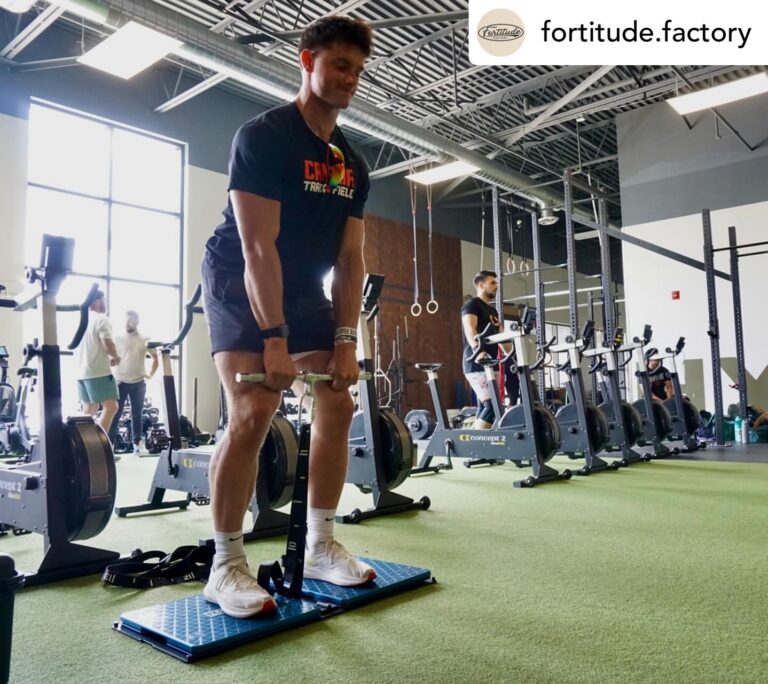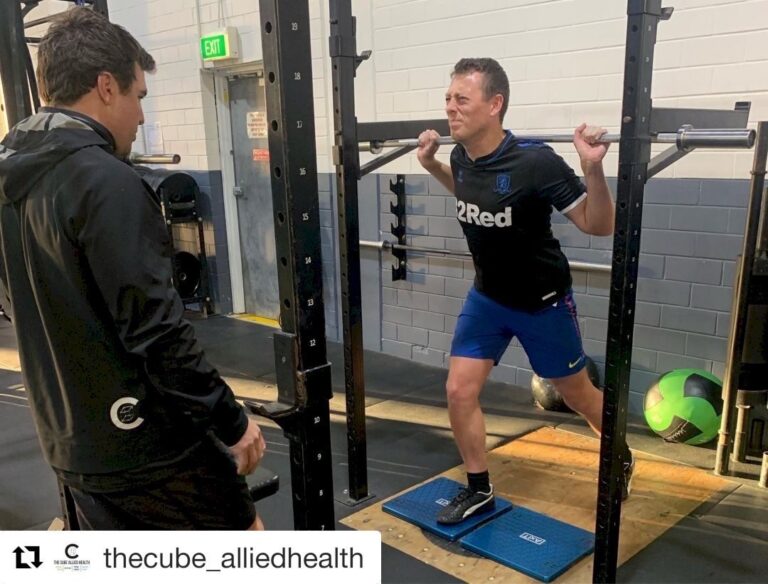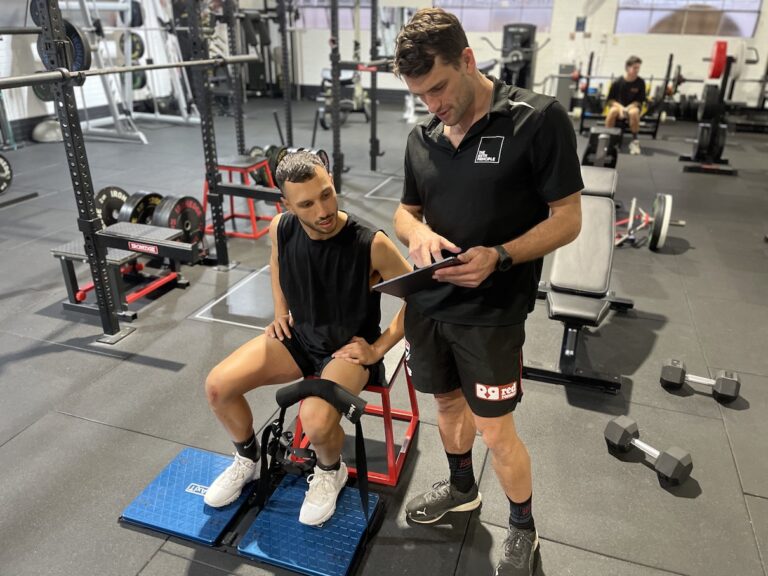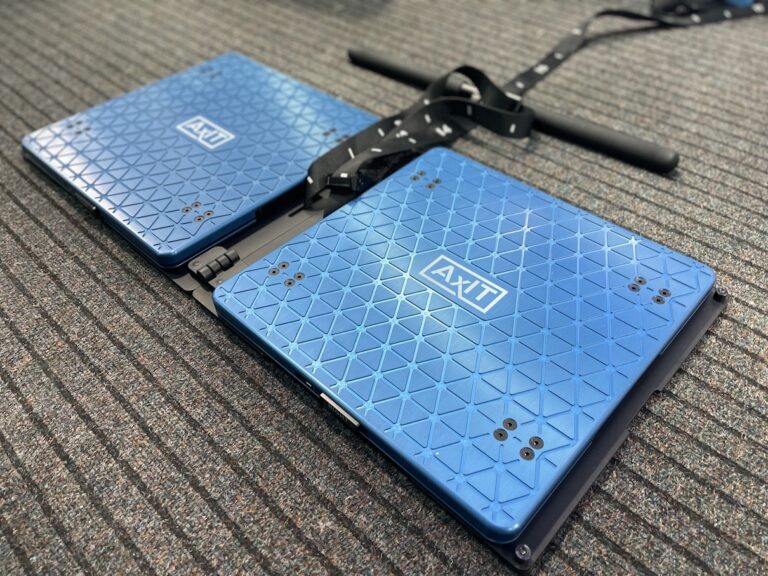Originally developed in the 1960’s for biomechanics research in elite sports, force plates have emerged as invaluable tools in an athletic setting, providing objective data to optimize high performance and identify potential injury risks. With advancements in technology and increased accessibility, portable force plates such as the AxIT Stomp-IT are now finding their way into everyday health and fitness settings, allowing technology previously only available to million-dollar sports teams and university laboratories to empower practitioners and individuals alike.
If you haven’t had the opportunity to experience the incredible benefits of incorporating smart force plates like AxIT Stomp-IT into your health and fitness practice, this blog is here to change that! Get ready to explore the Top 4 Strength Tests that can be performed using force plates and discover why they are an absolute game-changer for your clients.
Why use Force Plates and Isometric Strength Testing?
As health and fitness professionals, strength testing can be an important method of evaluating a client and can range anywhere from endurance strength testing with holds for time and reps to failure, or maximum strength testing using heavy resistance and low repetitions. Force plate and isometric strength testing tends to replace the traditional maximum strength tests, but have many key advantages.
Objective and Quantifiable Measurements: Force plates such as AxIT Stomp-IT and isometric strength testing provide objective and quantifiable measurements of force production such as Peak Force and Rate Of Force Development. Unlike 1RM testing, which relies on subjective judgment and estimation of what resistance can be moved, force plates and isometric testing offer precise data on force exertion. This objectivity enhances the accuracy and reliability of strength assessments, allowing for more informed decision-making and progress tracking.
Safer and Controlled Testing Environment: Isometric strength testing, which involves exerting force in a static position against an immovable resistance, provides a safer and more controlled testing environment compared to 1RM testing. With 1RM testing, there is a risk of injury due to the maximum effort exerted during dynamic movements. Isometric testing eliminates the need for dynamic movements and allows for a controlled assessment of strength without compromising safety and can therefore be appropriate for junior or older clientele.
Time Efficiency: Force plates and isometric strength testing require less time compared to 1RM testing, which involves multiple repetitions to determine the maximum load lifted. Isometric testing involves exerting force in a static position for a specific duration, while the force plates measure the force exerted on them. These methods save time during assessments, allowing for more efficient testing and evaluation processes. They can also be more portable and space efficient as discussed at the end of this blog.
Identification of Strength Asymmetries and Imbalances: Force plates and isometric strength testing can detect strength asymmetries and imbalances that may go unnoticed with 1RM testing alone. Force plates provide data on force distribution and balance, revealing differences in strength between limbs or muscle groups. Isometric testing allows for a focused assessment of strength at specific joint angles, helping identify imbalances within a specific range of motion.
Rehabilitation and Injury Prevention: Force plates and isometric strength testing are particularly valuable in rehabilitation settings and injury prevention programs. They allow physical therapists to assess and monitor strength gains throughout the rehabilitation process accurately. Isometric testing provides a controlled environment for individuals recovering from injuries or with specific movement limitations to assess and improve their strength safely.
Progress Tracking and Goal Setting: Force plates and isometric strength testing enable precise tracking of progress and setting of realistic goals. With objective and quantifiable measurements, therapists can monitor changes in force production, balance, and strength asymmetries over time. This data-driven approach enhances the ability to track progress accurately and adjust interventions or exercise programs accordingly.
Top 4 Force Plate Strength Tests
Isometric Mid Thigh Pull (IMTP)

If the deadlift exercise is considered the king (or queen) of all exercises, similarly the Isometric Mid Thigh Pull or IMTP should be considered the king of all isometric strength assessments. If you can deadlift an impressive weight, there is a high chance that you are overall very strong and the same applies if you can generate a high IMTP peak force result, which is why this test is becoming very popular for health and fitness professionals to assess their client’s performance.
Extensive research consistently supports the strong correlation of the IMTP with various athletic strength and power tasks. Studies by Beckham et al. (2015), Comfort et al. (2019), Dos’ Santos et al. (2017), Kuki et al. (2017) and Guppy et al. (2018) have demonstrated significant associations between IMTP and performance indicators such as 1RM squat, power-clean, snatch, deadlift, bench press, throwing, sprinting, jumping, change of direction tasks, as well as specific sports including sprint cycling, wrestling, track and field, soccer, and American football.
Furthermore, the IMTP offers a reliable, safe, efficient, and time-effective method for coaches to assess athletes which may be a more appropriate testing option than a 1RM barbell back squat as shown by Beckham et al. (2013).
Because of this, the IMTP is emergin as a gold standard for health and fitness professionals to measure, enhance and track athletic performance while minimizing the likelihood of injuries.
Isometric Squat

Similar to the Isometric Mid Thigh Pull, the Isometric Squat Test has gained recognition as a valuable method for assessing clients’ strength and has advantages over traditional 1RM squat testing. This test, which involves holding a static squat position and pushing down into dual force plates like AxIT Stomp-IT against an immovable force, either a bar or potentially using a belt squat variation, offers several benefits supported by research studies that have explored its efficacy.
A significant advantage of the Isometric Squat Test, compared to the IMTP, is its reduced demand for upper body involvement. This feature makes it particularly suitable for clients who have sustained arm or shoulder injuries, allowing health and fitness professionals to assess lower limb strength even when upper body engagement is limited.
Another advantage is the easier ability to perform single-limb isometric testing using the isometric squat. A study by Bishop et al. (2019) found the assessment of peak force in a single leg squat position to be reliable with previous research highlighting that PF asymmetries of 8% can have a detrimental effect on sporting performance such as sprinting and jumping, and 10% being a possible threshold for heightened injury risk in quadriceps strength.

The impact of strength training, strength levels, and rate of force development (RFD) on performance, as well as their correlation with reduced injury risk, is strongly supported by a substantial body of research including Case et al. (2020). Notably, collegiate athlete studies conducted by these authors found that athletes with strength levels below 2.2 times body weight (BW) for males and 1.6 times BW for females on a 1RM back squat, exhibited a moderate effect size for injury (0.86 for men, 0.85 for women). These findings suggest that achieving strength levels in the vicinity of these figures should be a target for strength and conditioning coaches in their training programs which could also be monitored using isometric strength testing such as IMTP or Isometric Squat.
Isometric Seated Calf Raise

If you have experience working with athletes, from high-performance competitors to weekend warriors, you’re likely well aware of the prevalence of muscle strains in these activities. Among these strains, hamstring injuries take the lead, resulting in the highest incidence rates and causing significant time lost across numerous sports. The importance of strength in preventing these injuries is widely recognized. However, there’s another culprit that often catches our clients by surprise, particularly once they reach the age of 30: the notorious “old man’s” disease or calf/soleus strain.

Unlike hamstring strains, we are only just beginning to grasp what can be done to reduce the risk and enhance performance in this area.
One of the biggest challenges has been adequately assessing the calf/soleus complex. This part of the body is incredibly strong. In fact, a study by Dorn et al (2012) revealed that the soleus can handle loads greater than 6 times body weight during running activities. Due to a lack of suitable equipment, it has often been difficult to adequately assess the strength of this area to a high enough degree in everyday health and fitness settings.
However, with the development of tests like the Isometric Seated Calf Raise and smart force plates AxIT Stomp-IT, this problem is now being overcome. These tests often involve assuming a position with approximate angles of 90° hip flexion, 100° knee flexion, and 10° ankle dorsiflexion. The client is then instructed to perform a calf raise movement against an immovable bar or strap while exerting maximum force through the force plate.
Research studies by O’Neil et al. (2019) examining healthy running athletes have revealed that strength ranges on these tests typically range from 1.5 to 2 times body weight. Similar findings have been observed in professional dancers, as reported by Mattiussi et al. (2022). Additionally, Möck et al. (2022) have demonstrated a correlation between plantar flexion strength and jump performance.
By incorporating these new assessment methods, we can now gain a better understanding of calf/soleus strength, identify potential weaknesses, and develop targeted strategies to reduce the risk of calf/soleus strains and enhance overall performance.
Isometric Push Up

Our previous discussions on isometric force plate tests have primarily focused on the lower limb. However, it’s important to acknowledge that there are also options available for assessing upper limb strength. In terms of upper body strength, push strength is often considered a crucial measure, evident in the use of heavy bench press testing as a key performance metric in various sports settings. Nevertheless, it’s important to recognize the potential risks associated with heavy bench press, including the increased risk of injury.
To address this, an alternative test called the Isometric Push-Up Test, as described by Bellar et al. (2015), can be highly beneficial. In this test, the hands are placed at 150% of shoulder width, the elbows are flexed at 90°, and an immovable strap is positioned behind the shoulders. The isometric push-up test serves as an effective assessment of maximum push strength while this research also demonstrates a correlation with 1RM bench press results.
One notable advantage of this testing method is that it requires minimal technical proficiency in pressing movement as opposed to a 1RM Bench Press which is a highly technical movement. Additionally, it is quick and easy to perform, requiring little warm-up and preparation, making it suitable for assessing larger groups of individuals such as gym participants or sports teams.
The Portability Problem

When combined with AxIT Stomp-IT, the most affordable wireless smart force plate system available, and AxITs fast and user-friendly analysis software, IsoBase creates the perfect setup for everyday health and fitness professionals who want to integrate Force Plate Strength Testing into their practice.
With this innovative combination, professionals can now overcome logistical challenges, enhance testing efficiency, and effectively incorporate portable dual force plate strength testing into their work with clients.
Want to learn more about how strength testing with Smart Force Plates could fit into your business?
We are excited to explore your needs and showcase the practical benefits of utilizing products such as AxIT Stomp-IT and IsoBase in your professional practice. Book a convenient time with our friendly team by clicking here, and we will provide you with an online demonstration that demonstrates the powerful capabilities of AxIT in action. We look forward to connecting with you and discussing how these tools can add value to your work and your clients.
References:
- Brady, C.J.; Harrison, A.J.; Comyns, T.M. A review of the reliability of biomechanical variables produced during the isometric mid-thigh pull and isometric squat and the reporting of normative data. Sports Biomech. 2018, 19, 1–25.
- Case, M. , Knudson, D. & Downey, D. (2020). Barbell Squat Relative Strength as an Identifier for Lower Extremity Injury in Collegiate Athletes. Journal of Strength and Conditioning Research, 34 (5), 1249-1253. doi: 10.1519/JSC.0000000000003554.
- Comfort, P.; Jones, P.A.; McMahon, J.J.; Newton, R. Effect of knee and trunk angle on kinetic variables during the isometric midthigh pull: Test–retest reliability. Int. J. Sports Physiol. Perform. 2015, 10, 58–63
- Kuki, Seita & Sato, Kimitake & Stone, Michael & Okano, Kenichi & Yoshida, Takuya & Tanigawa, Satoru. (2017). The relationship between isometric mid-thigh pull variables, jump variables and sprint performance in collegiate soccer players. Journal of Trainology. 6. 42-46. 10.17338/trainology.6.2_42.
- Beckham, G.; Mizuguchi, S.; Carter, C.; Sato, K.; Ramsey, M.; Lamont, H.; Hornsby, G.; Haff, G.; Stone, M. Relationships of isometric mid-thigh pull variables to weightlifting performance. J. Sports Med. Phys. Fitness 2013, 53, 573–581.
- ORR, DAWES, J. J. J. J., LOCKIE, R. G. R. G., & GODEASSI, D. P. D. P. (2019). The Relationship Between Lower-Body Strength and Power, and Load Carriage Tasks: A Critical Review. International Journal of Exercise Science, 12(6), 1001–1022.
- Bishop, Chris; Read, Paul; Lake, Jason; Loturco, Irineu; Dawes, Jay; Madruga, Marc; Romero-Rodrigues, Daniel; Chavda, Shyam; Turner, Anthony. Unilateral Isometric Squat: Test Reliability, Interlimb Asymmetries, and Relationships With Limb Dominance. Journal of Strength and Conditioning Research 35():p S144-S151, February 2021. | DOI: 10.1519/JSC.0000000000003079
- Ekstrand, Jan & Hägglund, Martin & Waldén, Markus. (2011). Epidemiology of Muscle Injuries in Professional Football (Soccer). The American journal of sports medicine. 39. 1226-32. 10.1177/0363546510395879.
- Dorn, T. W., et al. (2012). “Muscular strategy shift in human running: dependence of running speed on hip and ankle muscle performance.” J Exp Biol 215(Pt 11): 1944-1956.
- O’Neill S, Barry S, Watson P. Plantarflexor strength and endurance deficits associated with mid-portion Achilles tendinopathy: The role of soleus. Phys Ther Sport. 2019 May;37:69-76. doi: 10.1016/j.ptsp.2019.03.002. Epub 2019 Mar 9. PMID: 30884279.
- Mattiussi, Adam & Shaw, Joseph & Cohen, Daniel & Price, Phil & Brown, Derrick & Pedlar, Charles & Tallent, Jamie. (2022). Reliability, variability, and minimal detectable change of bilateral and unilateral lower extremity isometric force tests. The Journal of Sport and Exercise Science. 6. 191-199. 10.36905/jses.2022.03.05.
- Möck, Sebastian & Hartmann, René & Wirth, Klaus. (2022). Vertical jumping performance relates to the one-repetition maximum in the standing calf raise and in the squat. German Journal of Exercise and Sport Research. 10.1007/s12662-022-00852-9.
- Bellar D, Marcus L, Judge LW. Validation and Reliability of a Novel Test of Upper Body Isometric Strength. J Hum Kinet. 2015 Oct 14;47:189-95. doi: 10.1515/hukin-2015-0074. PMID: 26557203; PMCID: PMC4633254.

